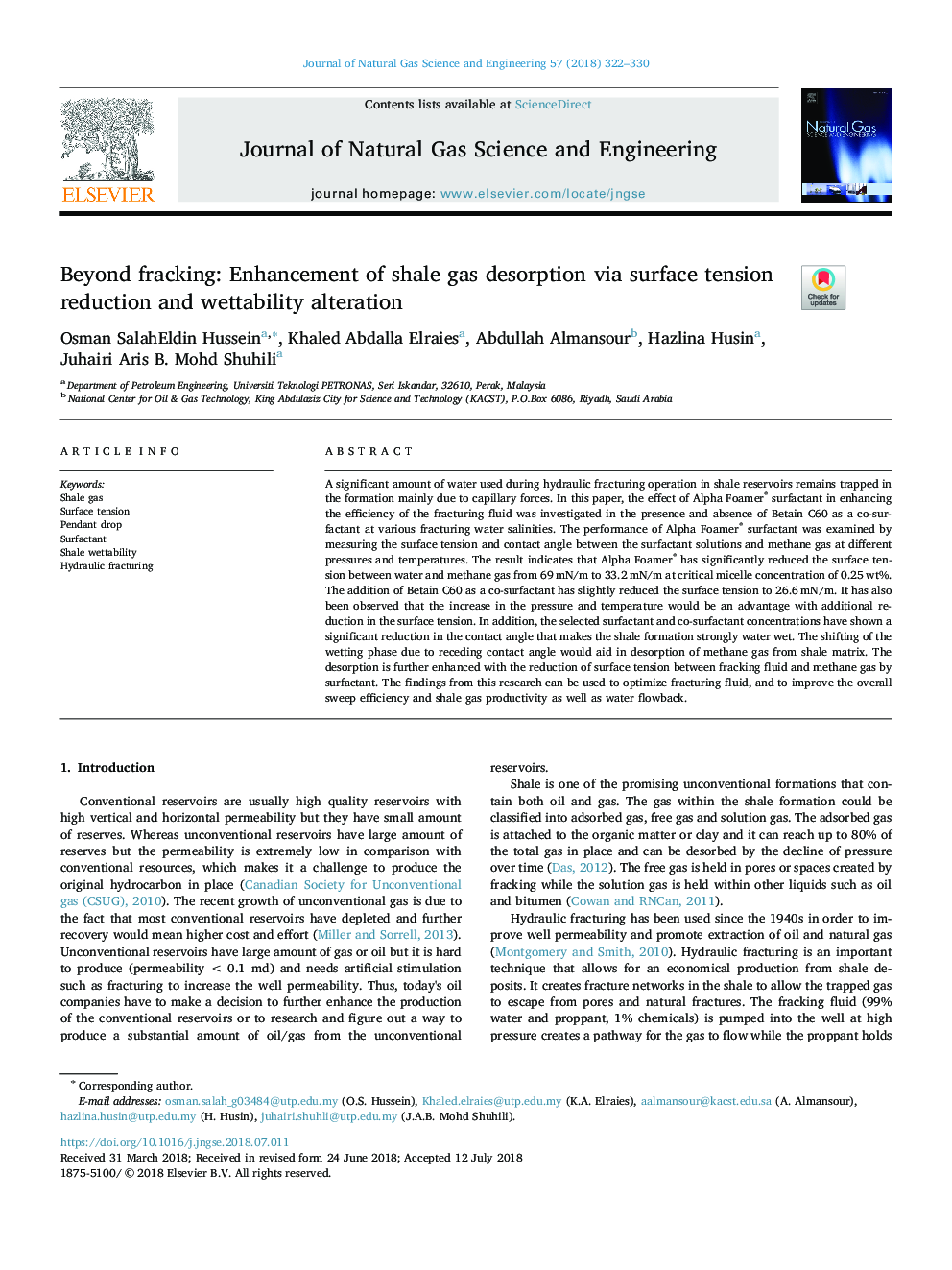| Article ID | Journal | Published Year | Pages | File Type |
|---|---|---|---|---|
| 8127822 | Journal of Natural Gas Science and Engineering | 2018 | 9 Pages |
Abstract
A significant amount of water used during hydraulic fracturing operation in shale reservoirs remains trapped in the formation mainly due to capillary forces. In this paper, the effect of Alpha Foamer® surfactant in enhancing the efficiency of the fracturing fluid was investigated in the presence and absence of Betain C60 as a co-surfactant at various fracturing water salinities. The performance of Alpha Foamer® surfactant was examined by measuring the surface tension and contact angle between the surfactant solutions and methane gas at different pressures and temperatures. The result indicates that Alpha Foamer® has significantly reduced the surface tension between water and methane gas from 69â¯mN/m to 33.2â¯mN/m at critical micelle concentration of 0.25â¯wt%. The addition of Betain C60 as a co-surfactant has slightly reduced the surface tension to 26.6â¯mN/m. It has also been observed that the increase in the pressure and temperature would be an advantage with additional reduction in the surface tension. In addition, the selected surfactant and co-surfactant concentrations have shown a significant reduction in the contact angle that makes the shale formation strongly water wet. The shifting of the wetting phase due to receding contact angle would aid in desorption of methane gas from shale matrix. The desorption is further enhanced with the reduction of surface tension between fracking fluid and methane gas by surfactant. The findings from this research can be used to optimize fracturing fluid, and to improve the overall sweep efficiency and shale gas productivity as well as water flowback.
Related Topics
Physical Sciences and Engineering
Earth and Planetary Sciences
Earth and Planetary Sciences (General)
Authors
Osman SalahEldin Hussien, Khaled Abdalla Elraies, Abdullah Almansour, Hazlina Husin, Juhairi Aris B. Mohd Shuhili,
